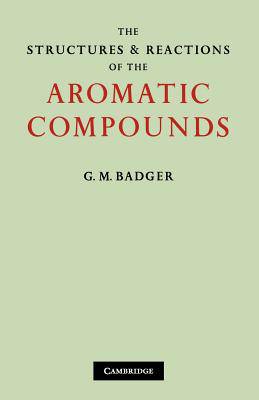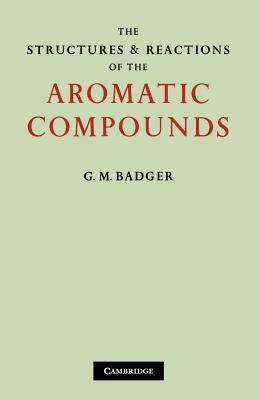
Door een staking bij bpost kan je online bestelling op dit moment iets langer onderweg zijn dan voorzien. Dringend iets nodig? Onze winkels ontvangen jou met open armen!
- Afhalen na 1 uur in een winkel met voorraad
- Gratis thuislevering in België vanaf € 30
- Ruim aanbod met 7 miljoen producten
Door een staking bij bpost kan je online bestelling op dit moment iets langer onderweg zijn dan voorzien. Dringend iets nodig? Onze winkels ontvangen jou met open armen!
- Afhalen na 1 uur in een winkel met voorraad
- Gratis thuislevering in België vanaf € 30
- Ruim aanbod met 7 miljoen producten
Zoeken
€ 98,45
+ 196 punten
Omschrijving
This 1954 book was the first to be devoted to the fundamental properties of the aromatic compounds as a whole. It describes the experimental and theoretical attempts to explain their structure and discusses their characteristic properties and the mechanism of their reactions. Heterocyclic compounds are included in Dr Badger's survey. Aromatic compounds are characterised by their cyclic molecular structure, their high degree of unsaturation and their stability. Coal tar is the chief source of aromatic compounds, but they are also made from crude oil and can be produced synthetically. Nearly all dyestuffs are 'aromatic', as are most of the common drugs and explosives. The book addressed itself primarily to graduates and final-year undergraduates. It was also of interest to research chemists in the dyestuffs, pharmaceutical and explosives industries. As some complex aromatic compounds produce cancer on the skin of laboratory animals, cancer research workers will also have found it relevant.
Specificaties
Betrokkenen
- Auteur(s):
- Uitgeverij:
Inhoud
- Aantal bladzijden:
- 472
- Taal:
- Engels
Eigenschappen
- Productcode (EAN):
- 9780521108843
- Verschijningsdatum:
- 21/07/2011
- Uitvoering:
- Paperback
- Formaat:
- Trade paperback (VS)
- Afmetingen:
- 140 mm x 216 mm
- Gewicht:
- 594 g

Alleen bij Standaard Boekhandel
+ 196 punten op je klantenkaart van Standaard Boekhandel
Beoordelingen
We publiceren alleen reviews die voldoen aan de voorwaarden voor reviews. Bekijk onze voorwaarden voor reviews.











